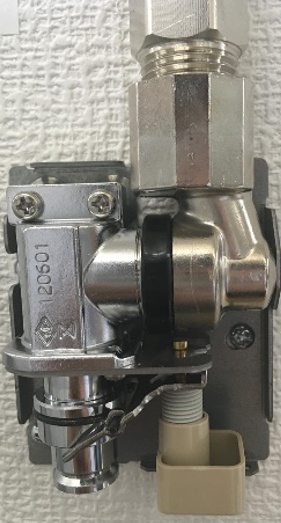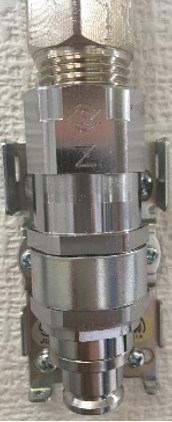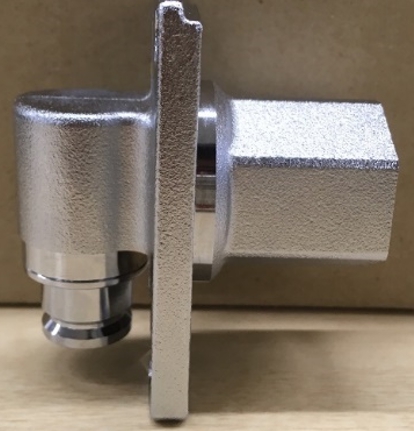These are the smallest case-type fuse valves for expansion in the industry, which ensure workability and operability.
* Fuse valves for expansion refer to dedicated gas valves that can be newly installed even if no gas valves are in place.Installation of fuse valves enables the use of fan heaters (FHs) and other appliances.

A case-type fuse valve can be installed on the wall surface for expansion. The conventional fuse valve was designed to cope with piping routes in two directions (top side and rear side) with a single product. This offered an advantage in terms of preparation of materials, but the product was bulky.Thus, we reviewed the structure of the fuse valve main unit and the mechanism to attach and remove the connector. Dedicated products were developed for connection on the top side and rear side to achieve downsizing.
The straight-type fuse valve,* which was developed in 2014, is used as the main unit. The mechanism to attach and remove the connector by pushing down the side face of the case has achieved downsizing while ensuring operability.
* The development of a safety mechanism, which was used in the conventional L-type fuse valve (refer to the table below), has made it possible to align the inlet side of the fuse valve with the outlet side. This structure enables installation in a narrow space.This compact design has been applied to the case-type fuse valve.
A conventional L-type fuse valve was installed in parallel with the wall surface. Vertical installation on the wall surface has been achieved for rear side connection. The attachment and removal mechanism by using the push button on the top has achieved downsizing while ensuring operability.



Straight fuse valve: Technology Award of the Japan Gas Association in 2016